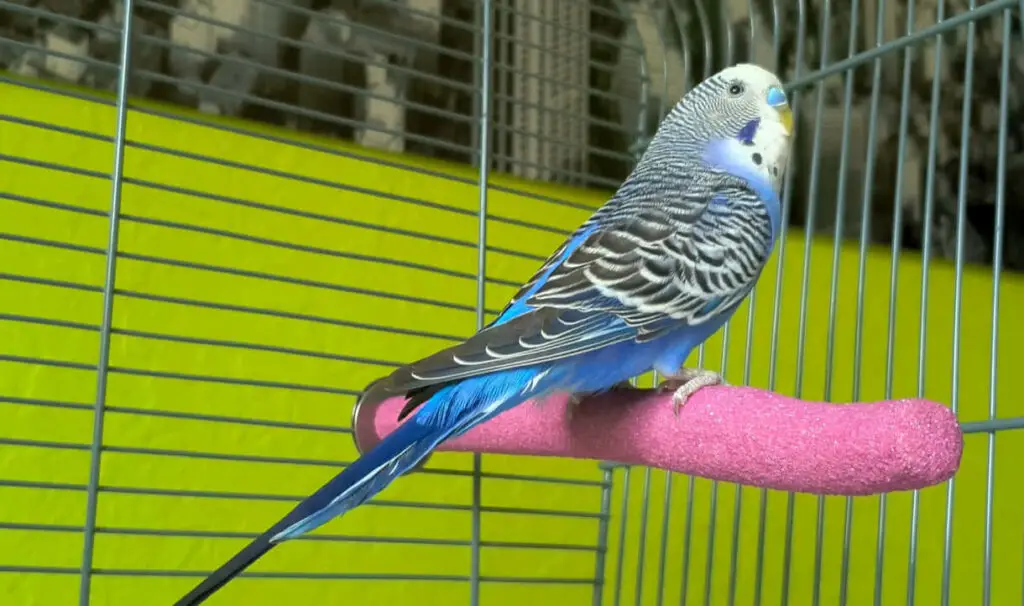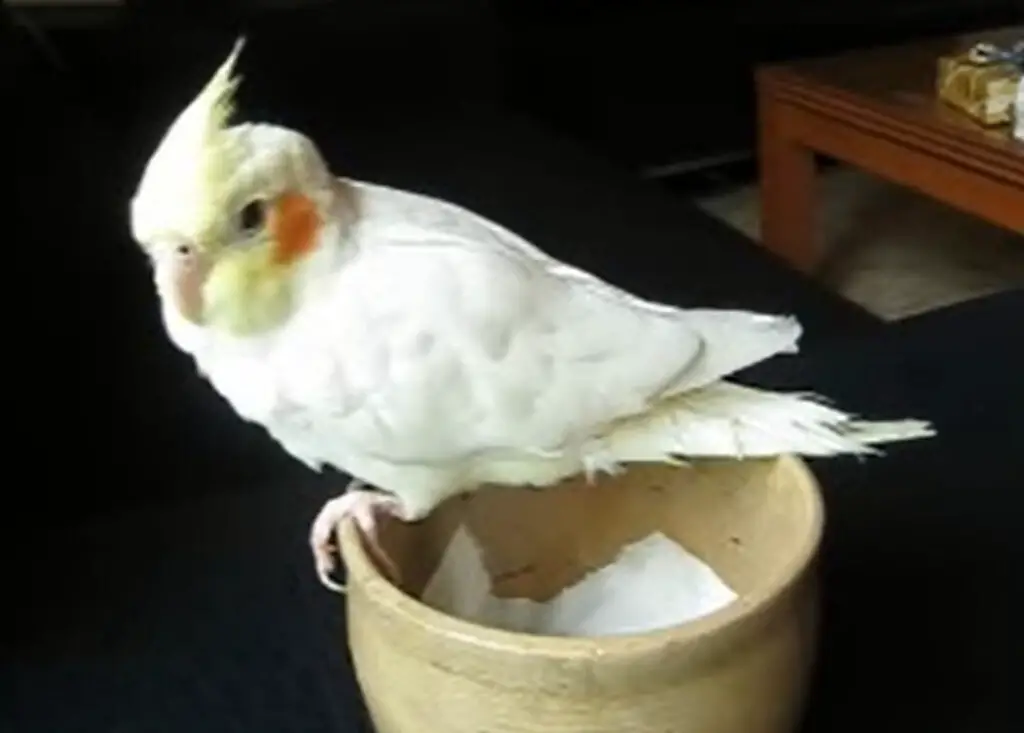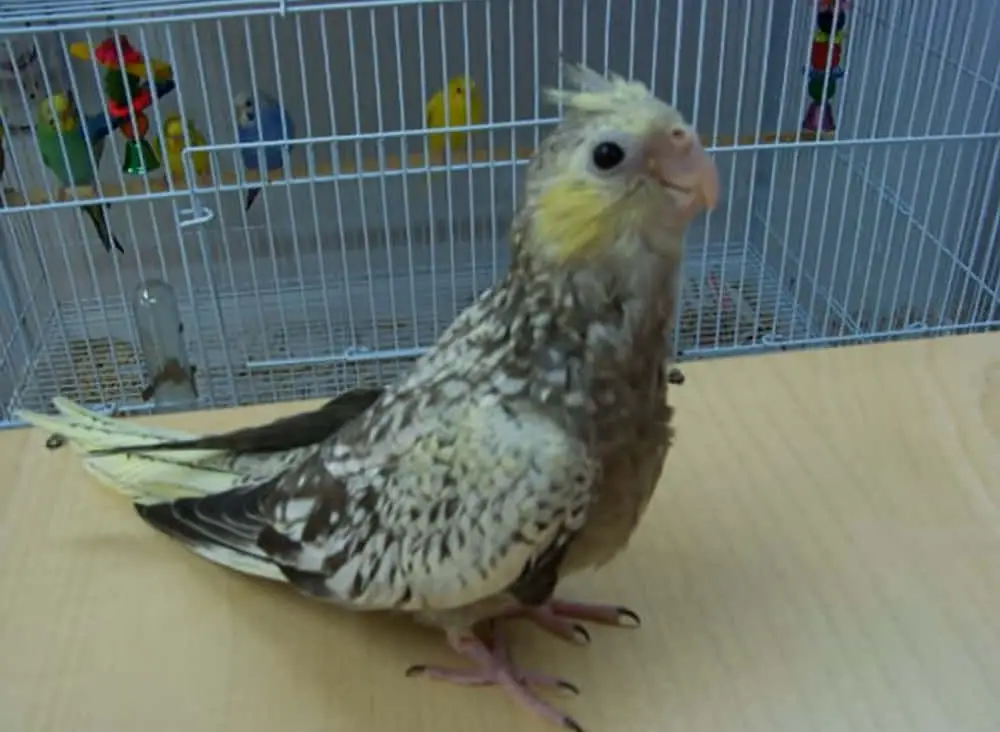Cockatiel tongue problems are not very common. But they do arise and can be concerning for most owners.
Primarily, a cockatiel’s tongue allows it to funnel its food down its throat, taste things, and mimic some words you teach it. Moreover, the tongue’s placement and design supports the function and movement of the bird’s beak.
Cockatiels have tongues that are muscled, which is why they can manipulate or grasp things with it – including its food. There is cartilage in the tongue, and this keeps the tongue in its place.
Over time, some issues with the tongue may arise – and this is why it is important to understand its anatomy and what are the common cockatiel problems plus the symptoms that come with these to prevent things from getting worse.
Let’s jump right into it.

Cockatiel Tongue Problems
Now, let us first talk about some common things that happen with a cockatiel’s tongue, which some people perceive as a problem.
For instance, you may notice that cockatiels have a dry tongue. But there is nothing to be concerned about since it is perfectly normal for it to be dry. This is what makes it possible for the bird to pick some things up with its tongue.
As for the rest of the tongue, particularly close to the back portion of its throat, it appears a bit moist. But at the same time, you can never see it glisten with saliva. Do not be alarmed when you see it this way, however. Cockatiels do not produce a large quantity of saliva. Thus, it is not possible to see them drool since the salivary glands are only close to the throat.
Moreover, cockatiels swallow food whole instead of chewing them. This explains why they don’t need saliva for moistening the inside portion of their beak.
Then, their tongue pushes food particles right back into the bird’s gullet. And at this point, some saliva is used for lubricating the esophagus and the food, making it possible for the food to go down the throat.
There is also a small opening located at the back portion of the beak, somewhat close to the tongue’s base. This may appear like a hole, yet it is not at all an injury. What this does is to connect various other pieces and it is in fact the glottis. This cavity sits at the top portion of the bird’s larynx and forms a portion of the bird’s respiratory system.
Moreover, the glottis is intentionally open all the time even when the bird is asleep.
Perhaps you may notice your pet clicking its tongue and wonder if this means there is a problem with it. But it is not at all a cause of concern. The clicking is a way for them to express their feelings. They may be excited, content, or happy, while in other cases, it is nothing but a random sound that they make – no particular reason at all.
They may also be picking up some sounds and trying to copy them – just like what they do in the wild. And in some instances, they are simply entertaining themselves. Even young ones click their tongues as a way of exercising this muscle or to distract them.
Tongue Injuries In cockatiels
It is possible for cockatiels to have an injured tongue. Although the beak guards the tongue, some injuries may still arise because of everyday activities or some accidents. This is why proper care is important to prevent this from happening. Since the tongue is vascular, it is easy to bleed so much when lacerated.
If your bird has accidentally cut its tongue, it may be due to chewing a sharp object such as a button, broken toy, or a piece of metal.
Aside from getting a cut on its tongue, some infections in the tongue may also arise. When they have a small laceration or abrasion, this can get infected. Among the common infections are foreign bodies such as bacteria and fungi getting into the cut portion.
Furthermore, rusty or dirty cages can be a severe hazard to your pet bird’s health once the debris enters the tongue from the bars. Some owners also report of a splinter of a piece of wood can get stuck in the tongue, which can lead to an infection.
Now, in other instances, a vitamin A deficiency can make a cockatiel prone to a tongue problem. This is called hypovitaminosis, which increases the build up of mucus in the tongue. You can see some white plaque appearing around the tongue’s base.
As a result, this portion can get infected and lead to severe irritation and swelling of your cockatiel’s tongue. The best way to address this problem is by giving your pet a balanced diet and food rich in vitamin A and other important nutrients.
Some tongue problems can also be caused by parasites and bacteria such as with trichomoniasis, which is due to drinking contaminated water. You can see some white plaque buildup on or surrounding the tongue’s base. Once the buildup gets worse, this can lead to serious respiratory complications, which can further develop into a severe infection and can even be fatal.
Another disease is the poxvirus that can also affect the tongue. It is mainly centered around the oral cavity, and you can see symptoms appearing like plaque buildup on the tongue.
And lastly, a swollen tongue may be observed, which can lead to poor appetite and inability to eat. So, it is best to get the affected tongue checked by a vet to ensure proper treatment and prevent things from getting worse.
Read More: Are You Allergic To Cockatiel? All You Need To Know About Cockatiel Allergies
Wrapping Up
Cockatiel tongue problems can be avoided by providing a good, balanced diet and a safe and clean cage for your pet. But if you notice some signs of an infection or injury to your pet’s tongue, it is best to get this inspected and treated by an avian vet to prevent further complications.







